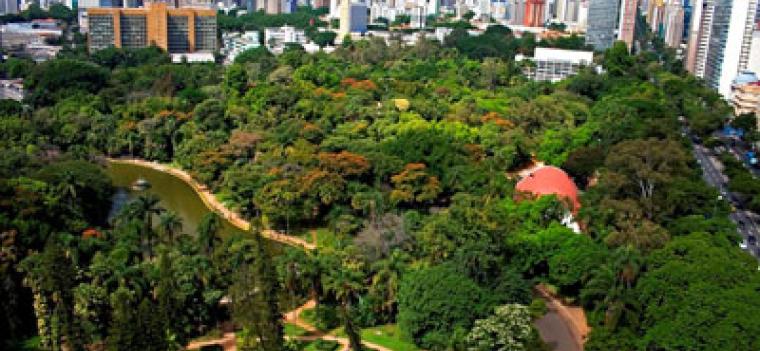News
- TRACE is a decision-support tool, developed by ESMAP, designed to help cities quickly identify energy efficiency opportunities.
- The tool assesses six sectors—transportation, public lighting, buildings, power and heat, waste, and water and wastewater.
- TRACE includes an energy benchmarking module that compares a city with key performance indicators of peer cities.
- A sector prioritization module ranks energy savings potential of various sectors of a given city. From those, recommendations are generated for specific energy efficiency interventions.
The city of Belo Horizonte, Brazil, is determined to be known for its commitment to sustainability. In recent years, the municipal government has switched public lighting to an efficient sodium vapor system, replaced the city’s traffic lights with LEDs, and created programs for sustainable public purchasing and building certification. It prides itself on its public parks and on having twice the green area inside the municipal boundaries than is recommended for cities by WHO guidelines. The name of the city itself means “Beautiful Horizon.”
As these sustainability initiatives progressed, authorities recognized that more could be done to improve the city’s energy efficiency. To help decide where to best allocate resources, Belo Horizonte has partnered with the World Bank to become the first city in Latin America to implement TRACE—the Tool for Rapid Assessment of City Energy.
TRACE is a decision-support tool, developed by ESMAP, designed to help cities quickly identify energy efficiency opportunities. It assesses six sectors—transportation, public lighting, buildings, power and heat, waste, and water and wastewater. TRACE includes an energy benchmarking module that compares a city with key performance indicators of peer cities. A sector prioritization module ranks energy savings potential of various sectors of a given city. From those, recommendations are generated for specific energy efficiency interventions.
Working directly with the Belo Horizonte municipal government and utilities for three months in early 2012, the ESMAP team conducted an assessment of energy used by the city and proposed recommendations in the key sectors. The results contained some surprises.
Compared to other cities, there were not many efficiency savings to be found in Belo Horizonte’s power sector, as technical and commercial losses were already some of the lowest in the world, and the local power utility invests the equivalent of US$28 million towards efficiency every year. The city also has an efficiency program for buildings, though the TRACE analysis found that a centralized unit with a mandate to implement specific measures could lead to increased energy savings.
Some of the greatest potential gains were to be found in the transport sector, by integrating the numerous plans and projects already underway and putting traffic flow optimization in place. Another target area was the water utility, where an active detection system could minimize the significant losses from leakage. The assessment also recommended that the city optimize the flow of garbage trucks to reduce the resources spent moving waste to landfills.
The recommendations of the TRACE assessment were presented to the City of Belo Horizonte, at the 2012 ICLEI World Congress—a major gathering of local government officials from around the world—which was held in Belo Horizonte on June 14-17. ICLEI—Local Governments for Sustainabilityis a global association of national, regional and municipal governments that have made a commitment to sustainable development. The Congress in Belo Horizonte brought together 1,600 participants and focused on creating low carbon, biodiverse cities built around people, not infrastructure.
“Cities can be the main drivers of energy efficiency for countries, particularly in the developing world,” said Ivan Jaques, who heads the Energy Efficient Cities Initiative at ESMAP. “Cities in some countries are growing at such a rate that in effect new cities are being created all the time. It is much more effective to build energy efficiency into the planning for such growth than to try to retrofit later. A tool like TRACE can help cities optimize resources and put them where they are going to make the most difference, reaping improvements in quality of life for inhabitants and budget savings for local governments.”
TRACE was initially field-tested with positive results in Quezon City, Philippines in 2010. The tool has since been deployed in fourteen other cities around the world. In Turkey, TRACE helped define the sustainable cities pillar in Turkey’s US$4.5 billion Country Partnership Strategy with the World Bank for the years 2012-2015. In Indonesia, the World Bank used the tool to create city-level case studies, the results of which are being used to create Sustainable Urban Energy Program guidelines for cities across the region.
For more information about the Energy Efficient Cities Initiative (EECI), visit us here.
